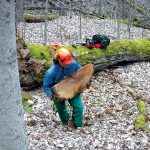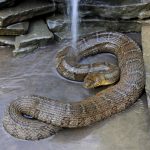
Two imperiled crayfish will have more protected habitat in Appalachian streams if a plan by the U.S. Fish and Wildlife Service is approved. The agency is taking public comment now.

Two imperiled crayfish will have more protected habitat in Appalachian streams if a plan by the U.S. Fish and Wildlife Service is approved. The agency is taking public comment now.

Volunteers with the Old-Growth Forest Network scout out stands of old-growth forest throughout the country to protect the unique forest habitats these trees provide.
New patches of Giant Hogweed, a toxic non-native invasive species, have been found in the eastern U.S., including Western North Carolina and parts of Virginia.

Wildflowers are one of Appalachia’s most vibrant symbols of summer. As the season’s end nears, we explore a few beautiful, unique flowers that blossom in late summer along mountain trails, forests and riverbeds.

Beavers are sometimes called “nature’s engineers,” and for good reason. By building lodges and dams as their homes, they physically alter the landscape to suit their own needs, similar to humans.

The non-venomous northern water snake is frequently spotted at swimming holes and rivers in Appalachia — and sometimes mistaken for its venomous cousin, the copperhead.
The new “Butterfly Highway” in North Carolina will create a series of stopover points with milkweed and other native, flowering plants for migrating monarch butterflies.

Characterized by a long bill, short and stout stature, extravagant mating display and a nickname like timberdoodle, the American Woodcock would seem to be a bird that stands out. But that is not the case.

Coyote populations in the Appalachian region are growing, and increasingly they are adapting to urban settings. As a result, interactions with humans are becoming more common.
Salamanders in southern Appalachia could be vulnerable to a deadly fungal infection.